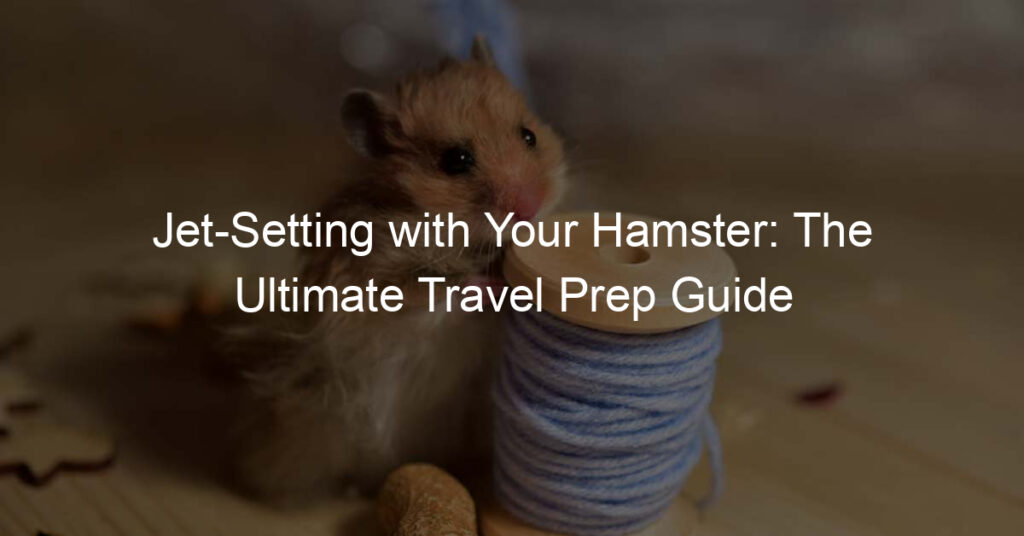If you’re a hamster lover, you might be wondering when you can release your furry friend into the wild. Unfortunately, it’s not as simple as just setting them free – releasing a domesticated hamster into the wild could do more harm than good.
Can hamsters be released into the wild?
Hamsters are a trendy pet around the world, with loyal fans that claim these sweet little critters make perfect companions.
While hamsters can make fantastic family members, some people have doubts as to whether they should be released into the wild.
Unfortunately, while it’s tempting to think of human-raised hamsters being able to handle the challenges of wildlife, studies suggest that it can cause more harm than good.
Domestic hamsters lack the instincts and skills needed to survive in the wild and run a high risk of falling victim to predators or other natural threats that aren’t present in captivity. With love, care, and commitment, however, they can have long, happy lives as much-loved household pets.
What can I do with unwanted hamsters?
Finding homes for unwanted hamsters is often a difficult and time-consuming challenge.
The most important thing when rehoming any animal is to make sure it goes to a suitable environment that can provide the necessary care and attention.
If you’re unable to give your hamster away yourself, there are usually local shelters and rescue organizations that allow people to drop off animals or submit photos and information to help find them new homes.
Before giving away your pet, however, it’s worth researching their needs so that you can be sure their future owners will keep them healthy and happy.
A good way of doing this is finding out whether potential guardians have enough space and resources for these intelligent creatures – or if they should instead look into adopting another type of pet altogether.
At what age can a hamster leave its mother?
Hamsters are socially independent creatures and typically become ready to leave their mother as young as three-to-four weeks old.
A hamster’s physical growth is usually complete by the time it reaches 8-10 weeks old, although it may still need extra nutrition for its first few months of life.
After 10 weeks of age, a hamster should be able to live separately from its mother without experiencing any negative health or behavior issues.
Owners should be sure never to keep a mother and her young littermates together after they reach a certain age, as this could increase the risk of fighting and aggression between siblings.
When removed at an early age, hamsters can experience fewer complications during the weaning process and get used to being in a new environment with minimal stress.
How long should I leave my hamster to settle in?
Depending on the individual hamster, it is usually best to give them at least a week of settling in time after bringing them home.
During this time, leave the hamster in a calm environment in its new cage with plenty of room to explore and play. Before interacting closely with your hamster, observe its behavior from a distance for a couple of days to ensure that it is comfortable in its new home.
Once it becomes clear that the hamster is used to being around you, handle and interact with it more regularly, but still be gentle and patient while they get used to their new owners.
Allowing your pet enough time to settle and become familiar with their environment will form the foundations for many happy moments together for years to come.
How many days is 1 day for a hamster?
Hamsters have a very different sense of time than humans, with a day to a hamster being much longer and more complex.
A single day often runs from the early evening until the early morning the next day and is split into multiple sections. In the evening, the hamster is active, playing and exploring its environment. It’s also at this time that it eats most of its food.
As the evening comes to an end, things wind down and its instinct is to make up for sleep lost during its daytime slumber.
Then in the morning, after about 12 hours of sleep, it will wake up for another round of activity before settling down again around midday. All in all, one full day to a hamster amounts to approximately 16 hours or more depending on age and species.
Wrapping Up:
Overall, it is essential to consider all factors before releasing your domesticated hamster into the wild. It goes without saying, but the health and safety of not only the released animal, but native wildlife as well, needs to be taken into consideration.
Whether you decide to release your pet or look for alternative options, these considerations are necessary for a comfortable outcome for all involved.
Also, remember that regardless of what is common practice or humane enough for human standards, caging domestic animals and releasing them can have devastating ecosystem-disrupting implications due to their non-native status.
For these reasons and more, open communication with local shelters and knowledgeable wildlife rescuers should be sought out to ensure that everyone feels like they have received a level playing field.
Ultimately, your decision should be made with a thoughtful reflection that takes into account both balance of the ecosystem and the welfare of your pet.








